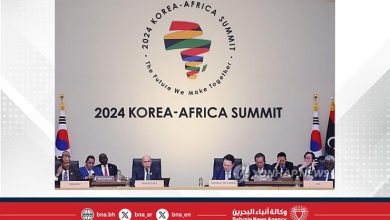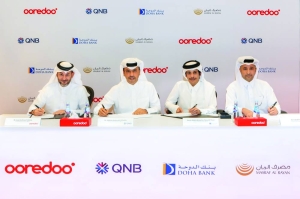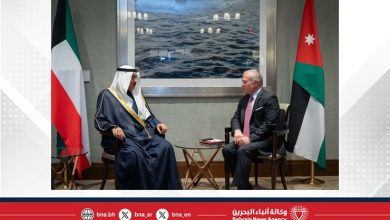Qatar’s economy expected to double by 2031: Standard Chartered


Standard Chartered Qatar chief executive officer Muhannad Mukahall.
The primary drivers behind this recovery include higher hydrocarbon prices and a surge in global demand for energy, particularly within the LNG or liquefied natural gas market.
Terming Qatar’s return to pre-2014 government revenue levels as a “significant” milestone in its economic journey, Standard Chartered, Qatar chief executive officer Muhannad Mukahall, said, this was neither coincidental or accidental “but in fact strategically driven by a combination of higher hydrocarbon prices, increased global demand for LNG, and substantial economic diversification efforts within sectors such as manufacturing, tourism, and finance.”
Currently, Qatar ranks as the sixth-largest gas producer in the world and holds the third-largest gas reserves, allowing the Gulf state to leverage rising hydrocarbon prices effectively.
Qatar’s strategic expansion of LNG capacity, set to increase output at the North Field by 85% by 2025, is poised to further boost revenues. Notably, this expansion is expected to nearly double natural gas output by the end of 2030 from the current 77mn tonnes per year (mtpy) with the bank’s recent Global Focus Economic Outlook Q2-2024 forecast pointing towards a ‘calm before the upsized gas boom’. The bank’s research team expects Qatar’s gas production to last for a period of 140 years as per the current rate.
The global oil market has experienced significant changes since the 2014 oil price shock. While the bank acknowledges a recovery in previously low oil prices, these remain volatile due to geopolitical risks, production level adjustments, and shifts in global demand.
Despite recent price volatility driven by geopolitical factors and demand fluctuations, robust demand persists, particularly during the summer months, with Brent crude forecasted to hit around $100 per barrel by year-end. Such dynamics, combined with technological advancements and a shifting geopolitical landscape, continue to shape the global oil market within the broader context of an ongoing energy transition.
Qatar’s economic diversification efforts are anchored by the Third National Development Strategy (2023-30), which plays a crucial role in the recovery of its government revenues, reducing economic dependence on hydrocarbons and enhancing resilience to price fluctuations, it said.
Qatar’s non-oil economy comprises two-thirds of Qatar’s GDP (gross domestic product) and has seen significant contributions from sectors such as real estate and construction, financial services, trade, manufacturing, logistics, and tourism. Such sectors have not only created new revenue streams but also provided employment opportunities, supported by substantial infrastructure investments.
The LNG sector has been a major revenue contributor, accounting for about 70% of total government revenue and 80% of export receipts.
Investments in downstream industries have bolstered the manufacturing and petrochemical sectors, adding value to Qatar’s hydrocarbon sector. The construction and real estate sectors have also seen growth, driven largely by infrastructure projects and real estate development, particularly those related to the World Cup and Qatar National Vision 2030 development plan.
The report made special note of the role of international financial institutions and foreign investment, both of which have supported Qatar’s diversification strategy, particularly in non-oil sectors such as tourism, manufacturing, finance, and logistics.
Qatar has implemented a series of reforms to improve the investment climate, including easing restrictions on foreign ownership, establishing free zones, and enhancing the legal and regulatory framework for businesses – all of which have successfully attracted significant infrastructure and energy sector investments from around the world.







